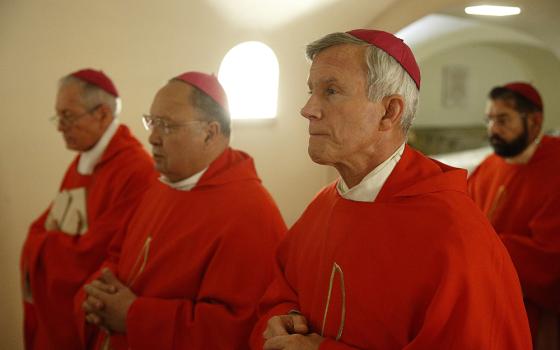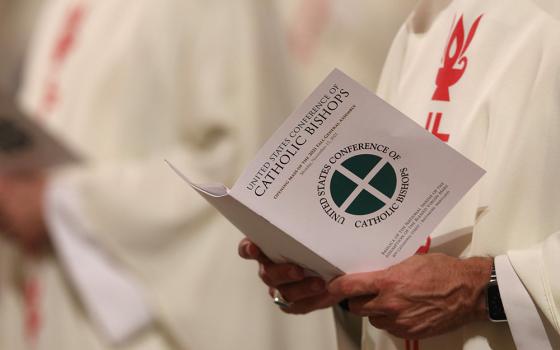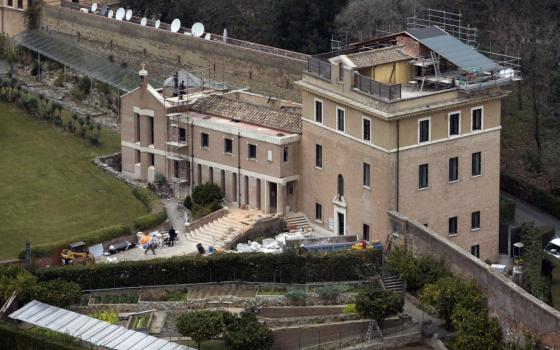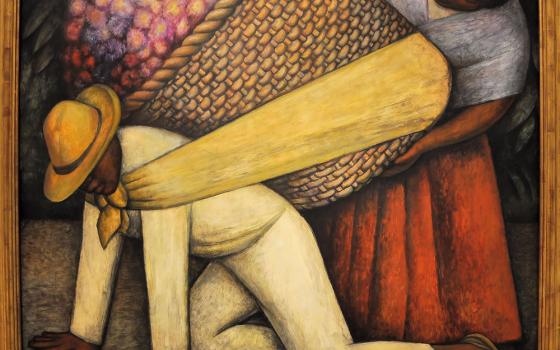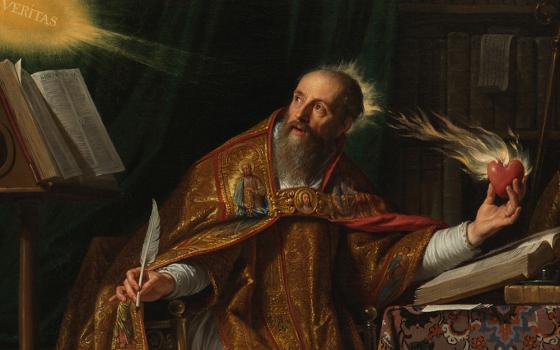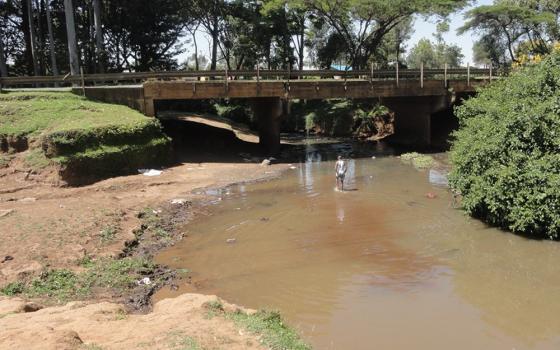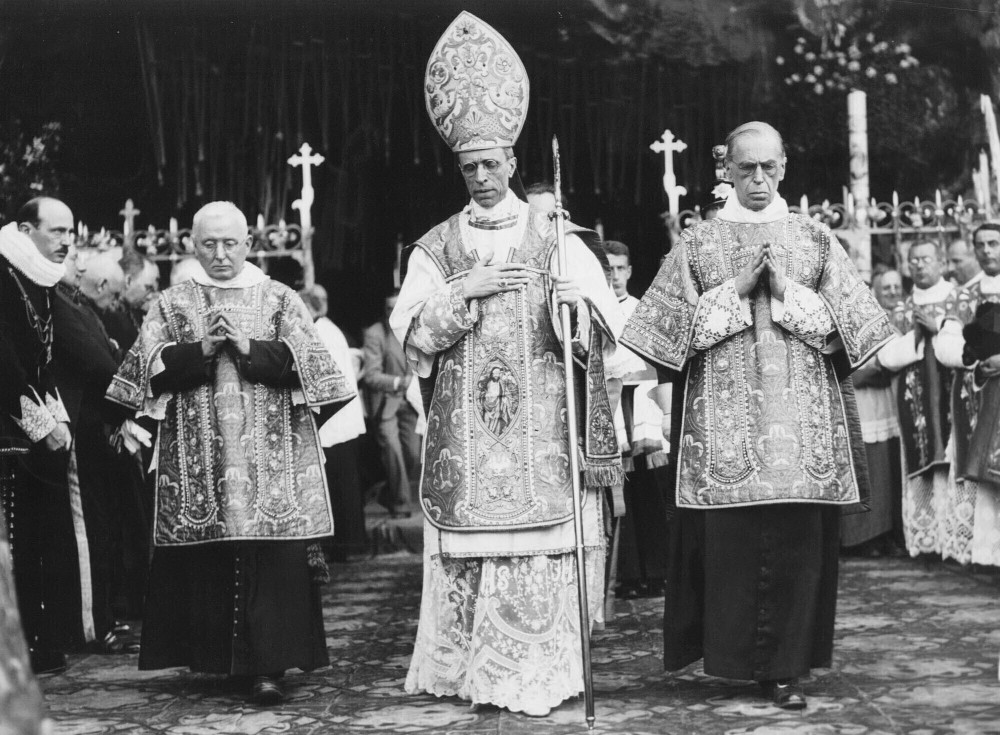
Undated file photo of Pope Pius XII. Newly discovered correspondence suggests that World War II-era Pius XII had detailed information from a trusted German Jesuit that up to 6,000 Jews and Poles were being gassed each day in German-occupied Poland, undercutting the Holy See’s argument that it couldn’t verify diplomatic reports of Nazi atrocities to denounce them. The documentation from the Vatican archives, published this weekend in Italian daily Corriere della Sera, is likely to further fuel the debate about Pius’ legacy and his now-stalled beatification campaign. (AP Photo, File)
Newly discovered correspondence suggests that World War II-era Pope Pius XII had detailed information from a trusted German Jesuit that up to 6,000 Jews and Poles were being gassed each day in German-occupied Poland. The documentation undercuts the Holy See’s argument that it couldn’t verify diplomatic reports of Nazi atrocities to denounce them.
The documentation from the Vatican archives, published this weekend in Italian daily Corriere della Sera, is likely to further fuel the debate about Pius’ legacy and his now-stalled beatification campaign. Historians have long been divided about Pius' record, with supporters insisting he used quiet diplomacy to save Jewish lives while critics say he remained silent as the Holocaust raged.
Corriere is reproducing a letter dated Dec. 14, 1942 from the German Jesuit priest to Pius’ secretary which is contained in an upcoming book about the newly opened files of Pius’ pontificate by Giovanni Coco, a researcher and archivist in the Vatican’s Apostolic Archives.
Coco told Corriere that the letter was significant because it represented detailed correspondence about the Nazi extermination of Jews, including in ovens, from an informed church source in Germany who was part of the Catholic anti-Hitler resistance that was able to get otherwise secret information to the Vatican.
The letter from the priest, Fr. Lothar Koenig, to Pius’ secretary, a fellow German Jesuit named Fr. Robert Leiber, is dated Dec. 14, 1942. Written in German, the letter addresses Leiber as "Dear friend," and goes on to report that the Nazis were killing up to 6,000 Jews and Poles daily from Rava Ruska, a town in pre-war Poland that is today located in Ukraine, and transporting them to the Belzec death camp.
According to the Belzec memorial which opened in 2004, a total of 500,000 Jews perished at the camp. The memorial’s website reports that as many as 3,500 Jews from Rava Ruska had already been sent to Belzec earlier in 1942 and that from Dec. 7-11, the city’s Jewish ghetto was liquidated. "About 3,000-5,000 people were shot on the spot and 2,000- 5,000 people were taken to Bełżec," the website says.
The date of Koenig’s letter is significant because it suggests the correspondence from a trusted fellow Jesuit arrived in Pius’ office in the days after the ghetto was emptied, and after Pius had received multiple diplomatic notes and visits from a variety of envoys of foreign governments from August 1942 onwards with reports that up to 1 million Jews had been killed so far in Poland.
While it can't be certain that Pius saw the letter, Leiber was Pius’ top aide and had served the pope when he was the Vatican’s ambassador to Germany during the 1920s, suggesting a close working relationship especially concerning matters related to Germany.
Advertisement
According to "The Pope at War," by Pulitzer Prize-winning anthropologist David Kertzer, a top secretariat of state official, Msgr. Domenico Tardini, told the British envoy to the Vatican in mid-December that the pope couldn’t speak out about Nazi atrocities because the Vatican hadn’t been able to verify the information.
"The novelty and importance of this document comes from this fact: that on the Holocaust, there is now the certainty that Pius XII was receiving from the German Catholic Church exact and detailed news about crimes being perpetrated against Jews," Coco was quoted by Corriere as saying.
However, Coco noted that Koenig also urged the Holy See to not make public what he was revealing because he feared for his own life and the lives of the resistance sources who had provided the intelligence. Pius' supporters have long insisted that he couldn't speak out strongly against the Nazis because of fears of reprisals.
In a telephone interview Sept. 16, Kertzer said the letter could be significant because it could mark the first time a reference to Jews being gassed in ovens had been revealed in a letter he said would certainly have been brought to Pius' attention. Kertzer said historians have been eagerly awaiting Coco's book because as a Vatican archivist, Coco had access to a trove of Pius' personal files that weren't yet indexed and made available to scholars when the Vatican opened the Pius archives in March 2020.
"When we started working there, it wasn’t a secret — although it took a while to figure out — what kinds of documents were missing," Kertzer said, noting that documents from the Vatican's office in Washington during the war years have still not yet been catalogued.
Pius’ legacy, and the revelations from the newly opened Vatican archives, are to be discussed at a major conference at Rome’s Pontifical Gregorian University next month that is notable because of its across-the-spectrum participant list and sponsorship. The Vatican, Israel’s Yad Vashem Holocaust research institute, the U.S. Holocaust Memorial as well as the Israeli and U.S. embassies are all backing it, among others.
The Vatican secretary of state, Cardinal Pietro Parolin, is to open the Oct. 9-11 meeting that will feature scholars including Kertzer, Coco and Johan Ickx, the archivist at the Vatican secretariat of state whose own book on the archives, "Pius XII and the Jews" published in 2021, praised Pius and the Vatican’s efforts to care for Jews and people fleeing the war.
Coco said Koenig’s letter actually was found in the Vatican's secretariat of state archives and was turned over to the Vatican's main Apostolic Archives only in 2019, because the secretariat of state's papers were disorganized and scattered, with some of Pius' documents kept in plastic containers in an attic storage space where heat and humidity were damaging them.
